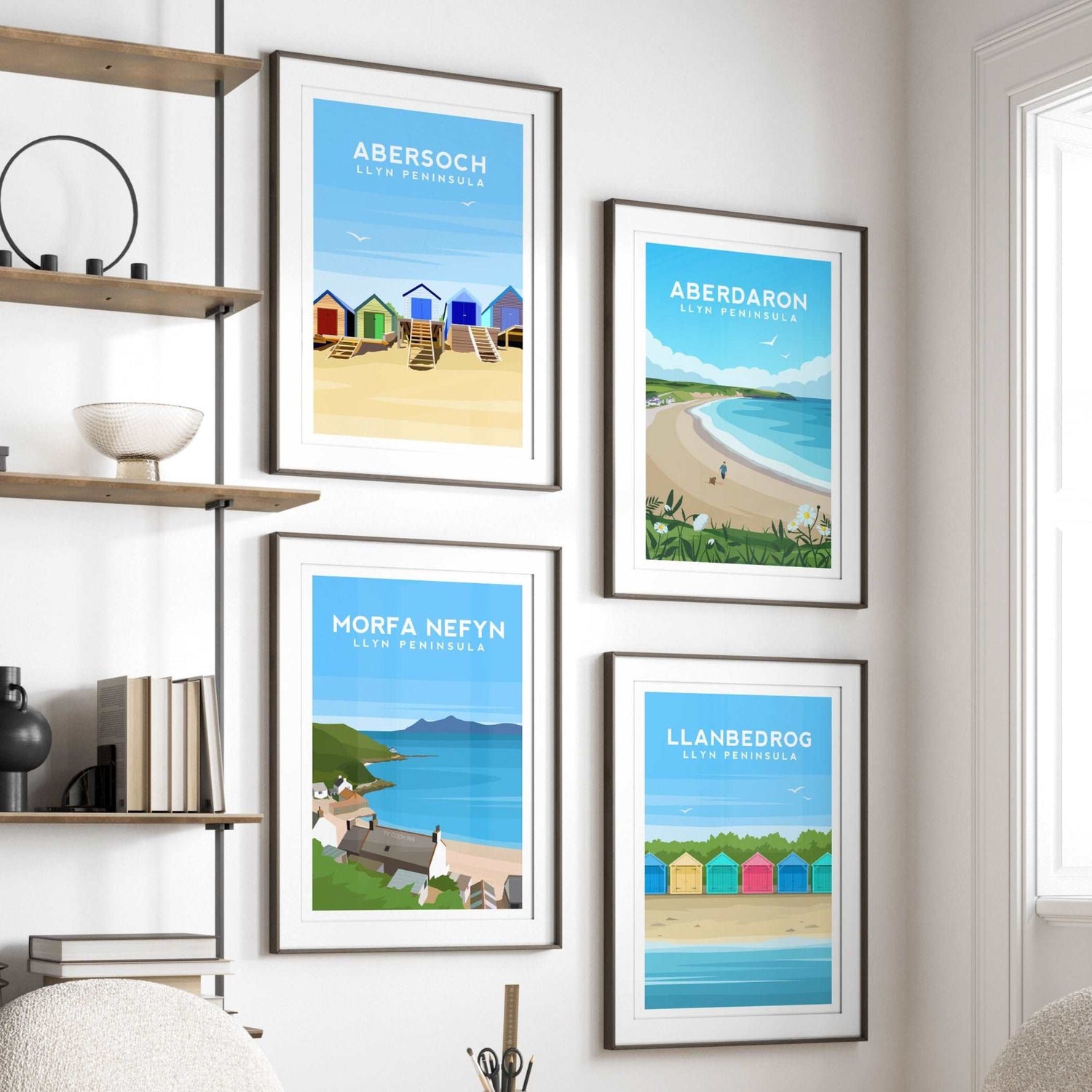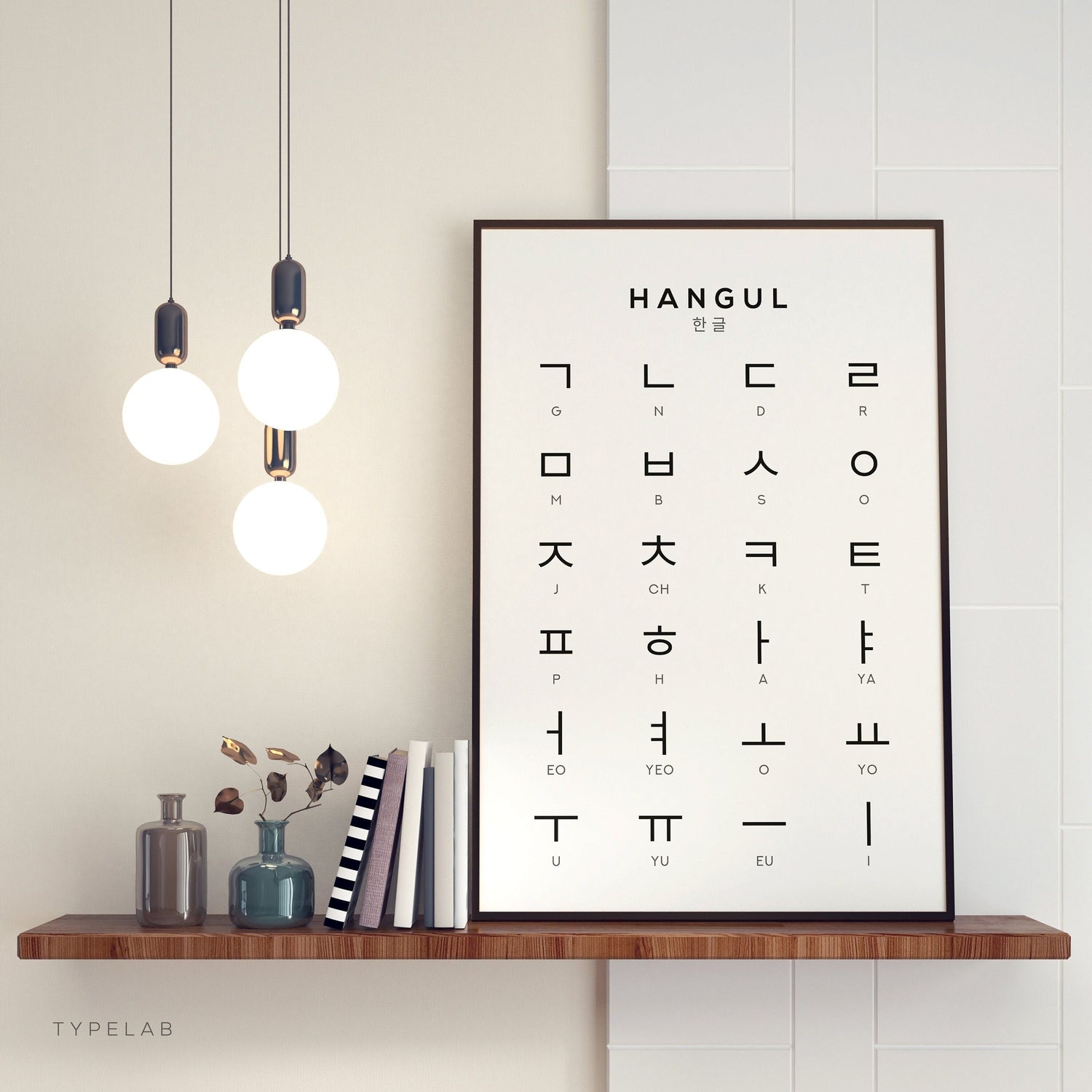Step-By-Step Design Tips to Create Your Own Art Display

Pictured: Set of 6 Greece Travel Prints | Greek Island Wall Art
When I first began to collect prints and artwork, I became an immediate fan of the gallery wall. I adored that they allowed me to combine all of my favourite art pieces in one cohesive display, rather than limiting my selection to a single piece. In this blog post, I'm excited to share my favourite gallery wall design concepts, plus general do's and don'ts to help guide you in creating a gallery wall that best fits your space. Along the way, I'll be throwing in practical tips that have assisted me personally when designing my own space. This guide is for DIY enthusiasts and home décor lovers alike—keep reading to learn how to build a gallery wall that can star as a focal point of any room.
Planning Your Gallery Wall: The Building Blocks
Prior to hammering nails or rearranging your living room, you'll need to plan your gallery wall design. Here are some tips to get you started:
1. Define Your Theme
Consider what you'd like your gallery wall to communicate about you. Maybe you're an adventure-lover who has been to far-flung destinations, or perhaps a homebody that finds comfort in displaying cherished memories. Establish a distinct theme that unites your prints, paired with a combination of complementary colours and patterns, or a particular design style that matches your interior.
2. Measure and Design Your Space
Before inserting picture hooks, measure both your framed prints and the wall space where you'd like to hang your display. Measuring will help to determine if the chosen layout of your prints will fit well, or if rearrangement is needed. If you'd prefer not to hang picture hooks, or live in rented accommodation, temporary solutions such as using Command Strips to hang art are a great alternative.
Designer's Tip: Take some photos with your phone if you're unsure. I use my phone to photograph the blank wall and then insert images of my prints using a simple collage app or photo editing software. This gives me a visual picture of how my gallery wall will look in its completed state, and allows me to experiment with different layout styles without commitment.
Another solution is to plan out your grid using painter's tape or masking tape. Tape can be used to make templates of the edges and dimensions of the planned display.
6 Gallery Wall Arrangement Ideas
Once you have a chosen theme and your space measured out, it's time to consider layout ideas. Below are 10 popular gallery wall arrangements that work for a variety of art styles:
1. The Classic Grid (Uniform Rows & Columns)

Ideal For: Sets of 6 or 8 Prints
A classic grid layout is chic and sleek. The tidy rows and columns create a neat, symmetrical look that works beautifully in most spaces.
Useful Tips:
Use even, measured spacing that is consistent between rows and columns, and hang prints using a level to avoid misalignment. This layout works best for portrait or square format prints.
2. Linear Row or Column

Ideal For: Sets of 3 or 4 prints
This straightforward, linear row solution is versatile and well suited for display above wider furniture objects such as sofas, sideboards or beds. A linear row layout can also make a statement on longer or open walls such as hallways or dining spaces. This layout is ideal for portrait or square format prints.
If you have a tall and narrow wall that needs a bit of personality, consider a column layout by displaying prints in a vertical sequence of three. Displaying your favourite prints in square mounted frames can cosy up a reading nook, or draw the eye to a neglected end of hall space.
Useful Tips:
Choose one direction (horizontal or vertical) that best fits the space. Keep spacing consistent, without creating too much distance between each frame.
Some of my customers have chosen to use a grouping of 3 to create a timeline of their relationships by displaying each of their home towns/cities alongside the place they currently live.
3. Salon-Style Cluster

Ideal For: Large artwork collections
For those who love eclectic design styles, a salon-style gallery wall creates a fun, relaxed, and unstructured look. This style is achieved by grouping art in an irregular and asymmetrical layout.
Useful Tips:
Putting together a Salon-Style look can seem intimidating at first, but thoughtful planning can help in achieving a cohesive layout. Now is a great time to create a mock-up of your space, either digitally or by using painter's tape. Choose a variety of artwork sizes to break up monotony, and consider using different frame styles and colours to add contrast. Incorporating other wall décor items, such as wooden, metal or textile art can also work well.
4. Symmetrical Grid

Ideal For: Sets of 4 or 9 prints
Showcase your prints in a symmetrical 2x2 or 3x3 arrangement for a clean and timeless look. A 2x2 print layout works particularly well for portrait prints displayed on a wall with plenty of vertical space, while 3x3 print layouts look balanced and curated when displayed in square frames. A 3x3 or even a 4x4 grid can also be a great option for music lovers that want to display their favourite records.
Useful Tips :
Using even and measured spacing helps this setup to shine. The negative space between each frame should be consistent both horizontally and vertically. Align the grid with the middle point of your wall, or align centrally above furniture.
5. Central Focal Point with Surrounding Accents

Ideal For: Drawing attention to a favourite art piece
If you have a standout art piece that you'd love to highlight – Consider using one larger central artwork as the focal point of your gallery wall, flanked by several smaller pieces.
Useful Tips:
Place the largest or most detailed print close to the centre. Arrange smaller prints around it with even spacing.
6. Asymmetrical Arrangement

Ideal For: Mixing different print sizes and formats, such as incorporating a combination of larger prints with smaller accent pieces
An asymmetrical gallery wall arrangement allows you to play with varying sizes and styles while still maintaining visual harmony.
Useful Tips:
Start by selecting your key pieces. Experiment by filling adjacent spaces with smaller, complementary prints in varying formats and orientations. To prevent the gallery wall from looking too scattered, anchor the layout together by keeping the distance between each frame to an appropriate measurement.
The Do's and Don'ts of Building a Gallery Wall
Every great gallery wall follows a few simple design principles. Here are 10 general do’s and don’ts to keep in mind as you build your display:
Pictured: Set of 4 Llyn Peninsula Wales Travel Prints
Plan Your Layout
Do: Mock-up or sketch your design beforehand, and experiment with tape or paper cut-outs on your chosen wall. Large walls with plenty of free space are great for asymmetrical or large grid arrangements, while smaller areas are better suited to groupings of 2 – 4. When designing a layout to hang above a sideboard or sofa etc, ensure the overall dimensions maintain balance with the furniture piece.
Don’t: Hang prints randomly—this can lead to an unbalanced and cluttered display. Avoid choosing a display that has a much smaller or considerably larger footprint than your furniture piece below, particularly with linear or grid styles.
Choose a Cohesive Theme
Do: Select prints that share a common theme or colour scheme. I love using digital mood boards for this purpose as it helps me to round up all potential pieces into one space, making it easier to spot if any artwork doesn't pair well with other pieces.
Don't: Mix completely disparate styles with no uniting element. For calm, contemporary or minimalist spaces, you may want to select a matching series of prints, or select only pieces that tie-in with the colour of your walls or furnishings. However if you're designing an eclectic or colourful space, you may want to avoid selecting prints that are too 'matchy-matchy'.
Maintain Consistent Spacing
Do: Use a level and measuring tape to ensure equal spacing between frames. As a general guideline, aim for a distance of 5 – 10cm or 2 – 4 inches of space between each frame.
Don’t: Overcrowd your wall or leave uneven gaps that break up the layout. Too much negative space between each frame can also prevent the gallery wall arrangement from feeling anchored and cohesive.
Pictured: Set of 3 Bauhaus Art Prints | Black and White Retro Wall Art
Consider Focal Points for Asymmetrical Displays
Do: Designate larger star pieces as the focal points and build your arrangement around them.
Don’t: Let every piece vie for attention by staggering artwork in the same size and format. Instead, consider utilizing a symmetrical grid layout for same-sized prints.
Experiment with Layouts
Do: Try out grid, linear, or asymmetrical arrangements to see what works best in your space. Consider a different layout for each room to keep things interesting.
Don’t: Stick to one arrangement if it doesn’t suit your wall’s dimensions or interior style. Using the same layout in multiple areas of your home may begin to feel repetitive.
Mix Art Types Thoughtfully
Do: Combine art and design styles strategically. While mixing styles can increase visual appeal, some art styles may not pair well together. For example, Mid Century Modern style prints may combine well with Minimalist, Scandinavian or other Retro style artwork.
Don't: Overwhelm the space with too many art styles or competing colours.
Hang at Eye Level
Do: Aim to build your gallery wall at a middle point of around 57 inches / 145cm from the floor, central to the entire composition. For gallery walls placed above taller furniture such as headboards, this measurement can be adjusted slightly to allow some space between the furniture and frames.
Don’t: Hang art too high or too low. Displaying artwork too high is a common mistake many of us are guilty of making (including myself!), which can make a ceiling look lower in some rooms.
Be Flexible
Do: Consider updating your gallery wall as time passes, by rearranging existing pieces or introducing new prints to keep the display fresh.
Don’t: Feel locked into your initial design. If a gallery wall I have previously built no longer works in my space, I like to replace the artwork in the existing frames for an affordable fix. Other ideas include adding mounts if your current frames do not have any, or look for ways to incorporate some of your favourite existing artwork into a new layout.
Final Tip: Don't Be Afraid to Showcase your Personality
While it can be tempting to follow the latest trends, mass produced or AI-generated artwork can often begin to feel generic and impersonal once a trend has passed. Don’t be afraid to incorporate personal mementos or photographs, or your favourite quotes, places, colours or artists.
If you're looking for your favourite places to incorporate into your gallery wall, click here to browse my full collection of handcrafted Travel Prints. Build your own arrangement by selecting individual pieces, or choose from a variety of curated bundles at a discounted price.






